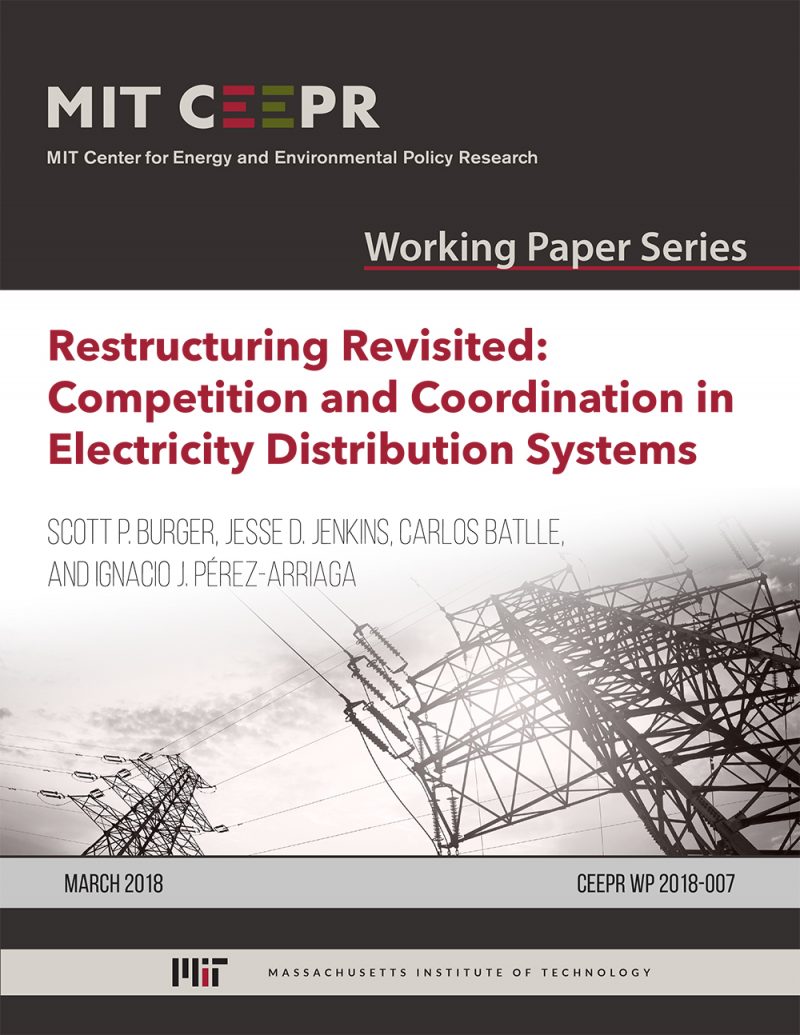Restructuring Revisited: Competition and Coordination in Electricity Distribution Systems
Scott P. Burger, Jesse D. Jenkins, Carlos Batlle, and Ignacio J. Pérez-Arriaga
March 2018
This paper addresses the implications of the emergence of distributed energy resources (DERs) for industry structure in the electric power sector. Regulations on industry structures dictate which actors can perform which roles in the power sector and play a key role in enabling or preventing efficient power sector planning, investment, and operation. However, the structures in place today were designed in an era characterized by centralized resources, unidirectional power flows, and relatively price inelastic demand. In light of the decentralization of the power sector, regulators and policy makers must carefully reconsider how industry structure at the distribution level affects system planning, coordination, and operation, as well as competition, market development, and cost efficiency. To address this critical issue, we analyze the economic characteristics of the actors necessary for efficient and reliable distribution system planning, investment, and operation: distribution network owners and operators, DER owners, aggregators and retailers, and data managers. We translate the foundational theories in industrial organization and the lessons learned during the previous wave of power system restructuring to the modern context in order to analyze the implications of these characteristics on the potential for competition in the roles of DER ownership and aggregation. This analysis provides deep insight into questions such as whether or not monopoly distribution utilities should be allowed to own distributed resources. We then analyze how the mechanisms for coordinating vertically and horizontally disaggregated actors need to be updated, focusing on the need to improve the price signals present at the distribution level. We argue that the price signals governing transactions at the distribution level must increasingly internalize the cost of network externalities, revealing the marginal cost or benefit of an actor’s decisions. This will require a dramatic rethinking of electricity tariffs.



